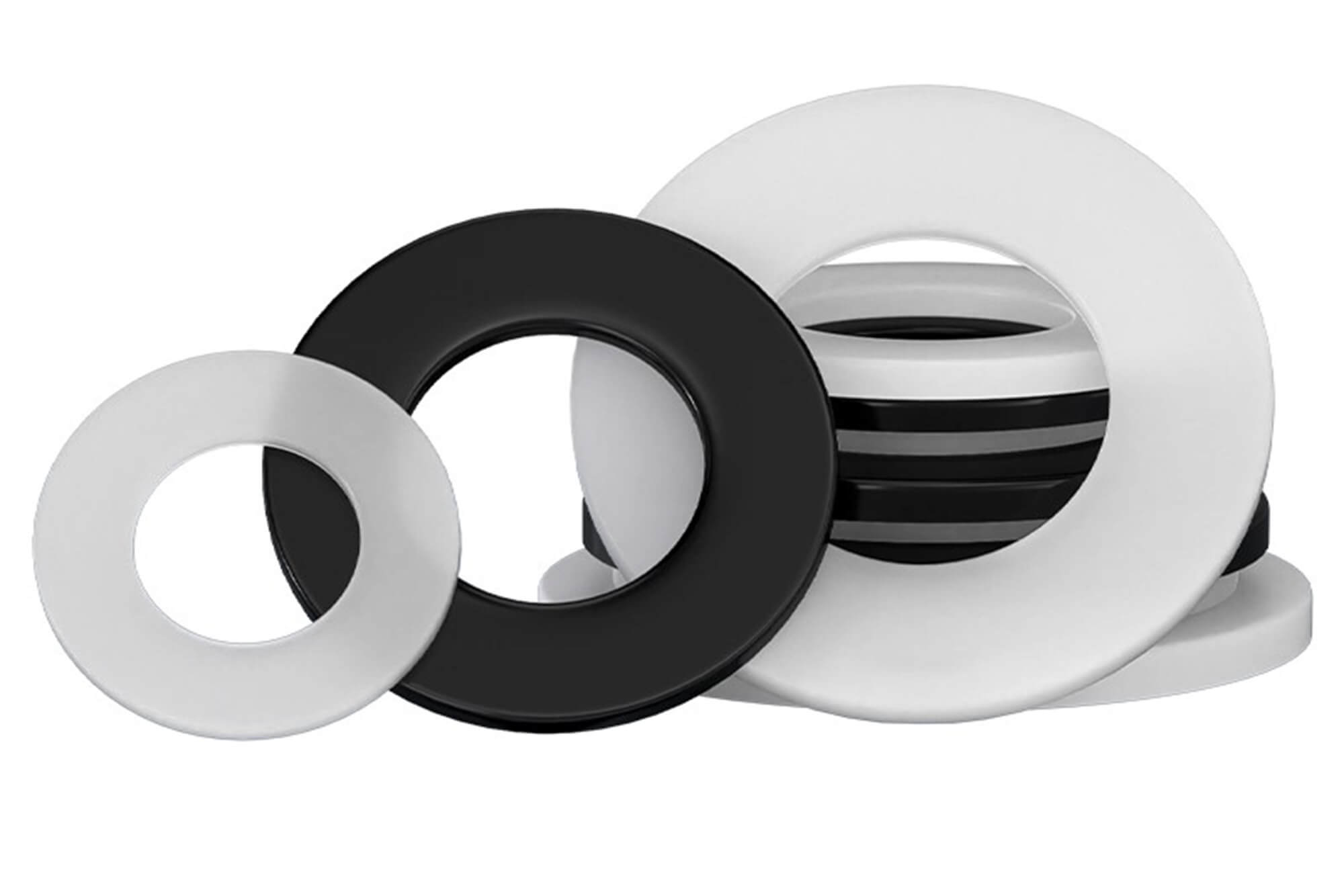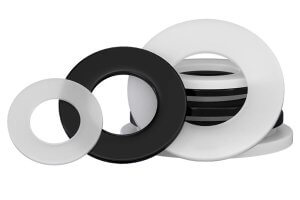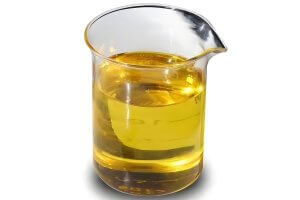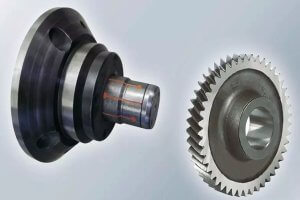In the complex landscape of modern engineering, plastic grommets are indispensable components that ensure the reliability, safety, and longevity of systems across industries such as aerospace, automotive, medical devices, electronics, and marine applications. Far from being mere rings, these precision-engineered plastic grommets serve critical functions, including protecting sensitive components, sealing against environmental contaminants, and reinforcing structural integrity. While commodity plastic grommets are mass-produced for general purposes, high-stakes industries require custom solutions with tailored material properties and exceptional dimensional accuracy. The convergence of advanced polymer science and Computer Numerical Control (CNC) machining enables the creation of such specialized plastic grommets, delivering unmatched precision and performance.
This comprehensive guide is designed for engineers, product designers, procurement specialists, and industry professionals seeking an in-depth understanding of plastic grommets. It explores their core functions, diverse typologies, material selection principles, and the pivotal role of CNC machining in producing high-quality, custom plastic grommets. Additionally, it examines emerging trends in manufacturing and provides actionable insights for sourcing reliable CNC partners. By blending technical depth with practical guidance, this article aims to equip readers with the knowledge to optimize the design and production of plastic grommets for mission-critical applications.
Understanding Plastic Grommets: Functions, Types, and Applications
At their essence, plastic grommets are rings or edge strips inserted into holes in materials such as sheet metal, composites, or plastic casings to provide protection, reinforcement, or sealing. In industrial and technical contexts, plastic grommets are far more than simple components; they are engineered solutions that address specific challenges in demanding environments.
Core Functions of Plastic Grommets
Plastic grommets perform a range of critical roles that enhance system performance and durability. They protect wires, cables, and hydraulic lines from abrasion by sharp edges in drilled or punched holes, preventing insulation wear, electrical shorts, or fluid leaks. In softer materials like textiles, thin plastics, or composites, plastic grommets reinforce holes to resist tearing under mechanical stress, such as in tarps, banners, or flexible enclosures. For applications requiring environmental protection, elastomeric plastic grommets, such as those meeting IP67 standards, provide watertight seals against dust, moisture, and other contaminants, safeguarding sensitive electronics or enclosures. Additionally, plastic grommets made from flexible polymers absorb vibrations, reducing wear and noise in automotive, industrial, and electronic assemblies. Their non-conductive nature also ensures electrical insulation and prevents galvanic corrosion, such as when a stainless steel cable passes through an aluminum panel.
Typology of Plastic Grommets
The versatility of plastic grommets is reflected in their diverse designs, each tailored to specific functional requirements. Open plastic grommets are simple rings used for routing and protecting cables through panels. Closed or blind plastic grommets seal unused holes, providing a clean finish and environmental protection. Diaphragm plastic grommets feature a pierceable membrane that accommodates various cable diameters, offering flexibility in applications with variable wire sizes. Split plastic grommets, also known as open bushings, allow side-entry installation for cables with pre-attached connectors, simplifying assembly. Edging strips, supplied in continuous rolls, protect long or irregularly shaped cutouts where individual plastic grommets are impractical. Strain relief bushings, a specialized type of plastic grommet, grip power cords at entry points to absorb mechanical stresses, protecting internal electrical connections.
Industrial Applications of Plastic Grommets
Plastic grommets are integral to high-stakes industries where reliability is paramount. In automotive applications, they protect wiring harnesses from engine heat, chassis vibration, and abrasion, supporting the complex electrical systems of modern vehicles, including electric vehicles (EVs). In aerospace, plastic grommets safeguard critical wiring and hydraulic tubing in high-vibration, extreme-temperature environments where failure is not an option. Electronics and data centers rely on plastic grommets to manage dense cable bundles in server racks and control panels, ensuring organized, reliable connections while protecting delicate wires from sharp metal edges. Medical devices use biocompatible plastic grommets made from materials like silicone or PEEK, which resist sterilizing agents and maintain reliable sealing. In marine applications, plastic grommets provide corrosion-resistant, watertight seals to protect electrical systems in harsh saltwater environments. These diverse applications underscore the need for custom plastic grommets tailored to specific performance requirements.

Material Science: Selecting Polymers for High-Performance Plastic Grommets
The performance of plastic grommets hinges on the choice of polymer, which directly influences mechanical strength, chemical compatibility, temperature resistance, and longevity. Polymers are categorized into three tiers based on performance: commodity, engineering, and high-performance plastics.
Commodity Plastics for Basic Applications
Commodity plastics like Polyvinyl Chloride (PVC), Polypropylene (PP), and Polystyrene (PS) are cost-effective options for low-stress plastic grommets. These materials are suitable for applications such as desk cable organizers or consumer electronics where environmental exposure and mechanical demands are minimal. PVC offers flexibility and chemical resistance, making it a common choice for general-purpose plastic grommets. Polypropylene provides lightweight durability, while Polystyrene is used for rigid, low-cost plastic grommets. However, their limited strength and temperature resistance restrict their use in demanding industrial settings.
Engineering Plastics for Industrial Needs
Engineering plastics, including Nylon (PA), Acetal (POM), and Polycarbonate (PC), offer superior mechanical properties and thermal stability, making them ideal for industrial plastic grommets. Nylon provides excellent toughness and wear resistance, suitable for automotive and mechanical assemblies, but its moisture absorption can affect dimensional stability in humid conditions. Acetal, known for its stiffness, low friction, and minimal moisture absorption, is perfect for precision plastic grommets in wet environments like plumbing or automotive fuel systems. Polycarbonate offers high impact resistance and transparency, often used in plastic grommets for visible or aesthetic applications, such as control panels or consumer devices.
High-Performance Plastics for Extreme Conditions
High-performance plastics like Polyether Ether Ketone (PEEK), Polytetrafluoroethylene (PTFE), and Ultem® (PEI) are engineered for extreme environments. PEEK maintains exceptional strength and chemical resistance at temperatures up to 482°F (250°C), making it ideal for aerospace and medical plastic grommets subjected to high heat and aggressive chemicals. PTFE, with unmatched chemical inertness and a low coefficient of friction, is used in chemical processing and high-frequency electrical plastic grommets, though its low mechanical strength requires careful design to avoid creep. Ultem® combines heat resistance and strength, suitable for demanding plastic grommets in electronics and aerospace where durability and flame resistance are critical.
Material Comparison Table
The following table compares key polymers used in plastic grommets, highlighting their properties and applications.
| Material | Tensile Strength (psi) | Max Service Temp (°F/°C) | Chemical Resistance | Wear Resistance | Relative Cost | Common Applications |
| Nylon (PA 6/6) | 10,000 | 194°F / 90°C | Good | Excellent | $$ | Automotive, industrial plastic grommets |
| Acetal (POM) | 9,000 | 230°F / 110°C | Good | Good | $$ | Precision plastic grommets, wet environments |
| PEEK | 14,000 | 482°F / 250°C | Excellent | Excellent | $$$$$ | Aerospace, medical plastic grommets |
| PTFE (Teflon®) | ~3,000 | 500°F / 260°C | Excellent | Poor | $$$$ | Chemical processing plastic grommets |
| UHMW-PE | 5,800 | 180°F / 82°C | Excellent | Outstanding | $$$ | Abrasive environments, mining plastic grommets |
Polymer Selection Framework
Selecting the optimal polymer for plastic grommets requires a systematic approach. First, consider the operating temperature: high-heat environments, such as engine compartments, necessitate PEEK or PTFE, while UHMW-PE suits lower-temperature applications. Next, assess chemical exposure, as PTFE and PEEK offer broad resistance to oils, solvents, and acids, critical for chemical processing or marine plastic grommets. Mechanical loads are also key—Nylon excels for sliding wear, UHMW-PE for abrasive wear, and PEEK for creep resistance under sustained loads. Dimensional stability is crucial for applications requiring tight tolerances, with Acetal and PEEK outperforming moisture-absorbing Nylon in humid conditions. Finally, balance cost versus performance: Acetal provides a cost-effective solution for industrial plastic grommets, while PEEK is reserved for critical, high-budget applications where failure is not an option.
Precision Manufacturing: The Role of CNC Machining in Plastic Grommets
CNC machining is the cornerstone of producing custom plastic grommets, offering unparalleled precision, flexibility, and material compatibility. This digital, subtractive manufacturing process transforms a polymer block into a finished plastic grommet with exacting specifications, making it ideal for low-to-mid volume production and high-performance applications.
The CNC Machining Workflow
The production of plastic grommets via CNC machining follows a structured process. A 3D Computer-Aided Design (CAD) model defines the plastic grommet’s geometry, including dimensions, tolerances, and features like grooves or flanges. Computer-Aided Manufacturing (CAM) software converts the CAD model into G-code, a set of instructions that dictates the CNC machine’s tool paths, cutting speeds, and feed rates. The chosen polymer block is securely fixtured in the CNC machine, and cutting tools such as end mills, drills, or turning tools shape the plastic grommet through precise material removal. Post-machining, the plastic grommet undergoes rigorous quality control using precision instruments like digital calipers or a Coordinate Measuring Machine (CMM) to verify compliance with design specifications. This ensures that each plastic grommet meets the exacting standards required for its intended application.
CNC Machining vs. Other Methods
CNC machining stands out against alternatives like injection molding and 3D printing for custom plastic grommets. Injection molding is cost-effective for high-volume production of standard plastic grommets but requires expensive tooling, making it impractical for low-to-mid volume runs or custom designs. 3D printing, while excellent for rapid prototyping, often lacks the precision, surface finish, and material strength needed for functional plastic grommets in demanding applications. CNC machining bridges this gap, offering tight tolerances, superior surface quality, and material integrity for prototypes, custom designs, and small-to-medium production runs of plastic grommets.
Manufacturing Method Comparison Table
The table below compares CNC machining, injection molding, and 3D printing for producing plastic grommets.
| Factor | CNC Machining | Injection Molding | 3D Printing (FDM/SLS) |
| Tooling Cost | Low to None | Very High | None |
| Unit Cost (Low Vol) | Moderate | Prohibitively High | Low |
| Unit Cost (High Vol) | High | Very Low | Moderate |
| Lead Time | Fast (Days) | Long (Weeks/Months) | Very Fast (Hours/Days) |
| Tolerances | Very Tight | Tight | Moderate |
| Material Selection | Very Broad | Broad | Limited |
| Best For | Prototypes, Custom Plastic Grommets, Low-to-Mid Volume | Mass Production of Standard Plastic Grommets | Rapid Prototyping, Complex Geometry |
Advantages of CNC Machining for Plastic Grommets
CNC machining offers distinct benefits for producing plastic grommets. It achieves micrometer-level tolerances, critical for aerospace and medical plastic grommets where precision ensures a perfect fit and reliable function. The process delivers smooth surface finishes, essential for effective sealing and low-friction interfaces, often eliminating the need for secondary polishing. Starting with a stress-relieved polymer block, CNC machining preserves the material’s mechanical properties, ensuring the plastic grommet retains its strength and durability. Additionally, CNC machining enables rapid design iterations by simply updating the CAD file, avoiding the costly mold modifications required in injection molding. Its compatibility with a wide range of polymers, from Nylon to PEEK, makes it versatile for diverse plastic grommet applications.
Sourcing a CNC Machining Partner for Plastic Grommets
Selecting a reliable CNC machining partner is critical to ensuring the quality, cost-effectiveness, and timely delivery of plastic grommets. A poorly machined plastic grommet can lead to field failures, resulting in costly downtime or safety risks, making the choice of partner a strategic decision.
Key Criteria for Selecting a CNC Partner
When evaluating CNC machining providers for plastic grommets, several factors are critical. Expertise in machining specific polymers, such as PEEK or PTFE, is essential, as these materials require specialized knowledge of cutting speeds, feeds, and tooling to avoid issues like melting or warping. Industry-specific experience, such as compliance with AS9100 for aerospace or ISO 13485 for medical plastic grommets, ensures adherence to stringent quality standards. A modern fleet of multi-axis CNC machines, advanced CAD/CAM software, and well-maintained tools indicate a provider’s capability to produce complex plastic grommets. ISO 9001 certification and robust quality control systems, including the use of CMMs and other precision inspection tools, ensure consistent dimensional accuracy. Finally, a responsive partner that offers technical guidance and design-for-manufacturability support can optimize the production process, reducing costs and lead times for plastic grommets.
Preparing a Request for Quotation (RFQ)
To streamline the quoting process for plastic grommets, provide a comprehensive information package. Include 3D CAD files (preferably in STEP format) and 2D drawings with clearly defined dimensions, tolerances, and critical features. Specify the exact polymer, such as “Glass-Filled Nylon” or “Carbon-Filled PEEK,” or describe the operating environment (e.g., temperature, chemical exposure) if material selection is uncertain. Indicate the initial production volume and projected annual needs to help the provider assess cost and scalability. Note any special requirements, such as surface finish specifications, part marking, or secondary assembly, to ensure accurate pricing and feasibility.
Partner Evaluation Table
The table below outlines key factors to evaluate when selecting a CNC machining partner for plastic grommets.
| Criteria | Description | Why It Matters |
| Polymer Expertise | Experience machining specific materials like PEEK, PTFE, or Nylon | Ensures proper handling of material-specific challenges like heat or creep |
| Industry Certifications | ISO 9001, AS9100, or ISO 13485 compliance | Guarantees adherence to quality and regulatory standards for plastic grommets |
| Equipment Capability | Multi-axis CNC machines, advanced CAM software | Enables complex geometries and tight tolerances for precision plastic grommets |
| Quality Control | Use of CMM, calipers, and documented inspection processes | Verifies dimensional accuracy and consistency of plastic grommets |
| Support Services | Design consultation, rapid prototyping, and responsive communication | Reduces design errors and speeds up development of plastic grommets |
Emerging Trends in Plastic Grommet Manufacturing
The manufacturing landscape for plastic grommets is evolving rapidly, driven by technological advancements that enhance precision, efficiency, and sustainability. Artificial intelligence (AI) is transforming CNC machining by predicting tool wear, optimizing cutting parameters, and reducing material waste, leading to more cost-effective production of plastic grommets. Collaborative robots (cobots) are automating repetitive tasks like material handling, part loading, and inspection, improving throughput while complementing the expertise of skilled machinists. Hybrid manufacturing, which combines 3D printing for rapid prototyping with CNC machining for finishing, enables faster development cycles for complex plastic grommets. Additionally, sustainable practices, such as recycling polymer scraps and using eco-friendly materials, are gaining traction, aligning with industry demands for greener production methods. These innovations ensure that plastic grommets can be produced with greater precision and efficiency, meeting the evolving needs of high-performance industries.

Case Studies: Plastic Grommets in Action
To illustrate the real-world impact of plastic grommets, consider two practical examples. In an aerospace application, a manufacturer used PEEK-based plastic grommets to protect wiring in a jet engine’s high-temperature environment. CNC machining ensured tolerances of ±0.01 mm, critical for maintaining a secure fit under thermal expansion and vibration. The result was a lightweight, durable plastic grommet that reduced maintenance costs and enhanced system reliability. In a medical device application, biocompatible silicone plastic grommets were machined to provide IP68 sealing for a portable diagnostic tool. These plastic grommets resisted sterilizing agents and maintained a watertight seal through repeated use, ensuring patient safety and device longevity. These cases demonstrate how custom plastic grommets, produced via CNC machining, address unique engineering challenges in demanding environments.
Challenges and Considerations in Plastic Grommet Production
Producing high-quality plastic grommets involves navigating several challenges. Material selection requires balancing performance with cost, as high-performance polymers like PEEK or PTFE are significantly more expensive than commodity plastics like PVC. Machining complex polymers demands specialized expertise, as improper cutting speeds or feeds can cause melting, warping, or poor surface finishes, compromising the plastic grommet’s performance. Achieving tight tolerances in plastic grommets necessitates rigorous quality control to avoid rejects, particularly in low-volume runs where cost per part is higher. Supply chain disruptions, such as shortages of high-performance polymers, can delay production, emphasizing the importance of reliable material suppliers. Additionally, designing plastic grommets for manufacturability—such as avoiding overly thin walls or complex geometries—can reduce production costs and improve outcomes. Partnering with an experienced CNC provider mitigates these challenges, ensuring high-quality plastic grommets that meet application requirements
Conclusion
Plastic grommets are small but essential components that underpin the reliability and performance of systems in aerospace, automotive, medical, electronics, and marine industries. By leveraging advanced polymers like PEEK, PTFE, Acetal, and Nylon, and utilizing precision CNC machining, manufacturers can produce custom plastic grommets that deliver exceptional protection, sealing, and durability. The right material choice, combined with the precision and flexibility of CNC machining, ensures that plastic grommets meet the stringent demands of high-stakes applications. Selecting a skilled CNC partner with expertise in polymer machining, modern equipment, and robust quality control is critical to achieving optimal results. As technologies like AI, collaborative robots, and hybrid manufacturing continue to advance, the production of plastic grommets will become even more precise, efficient, and sustainable, solidifying their role as vital components in advanced engineering solutions.
FAQ:
Q1: What are plastic grommets, and why are they important in engineering applications?
A: Plastic grommets are precision-engineered rings or edge strips inserted into holes in materials like sheet metal, composites, or plastic casings to protect, reinforce, or seal. They prevent abrasion of wires and cables, reinforce soft materials, provide watertight sealing, dampen vibrations, and ensure electrical insulation. In industries like aerospace, automotive, and medical devices, plastic grommets are critical for ensuring system reliability, safety, and longevity, particularly in harsh environments where failure is not an option.
Q2: How do I choose the right polymer for a custom plastic grommet?
A: Selecting the right polymer for plastic grommets depends on the application’s requirements. Consider the operating temperature: PEEK or PTFE for high-heat environments (up to 482°F/250°C or 500°F/260°C), or Acetal for moderate conditions. Assess chemical exposure, as PTFE and PEEK resist most solvents and acids. Evaluate mechanical loads—Nylon for sliding wear, UHMW-PE for abrasion, or PEEK for creep resistance. Dimensional stability is key for tight tolerances, with Acetal and PEEK outperforming moisture-absorbing Nylon. Finally, balance cost and performance: commodity plastics like PVC for low-cost plastic grommets, or high-performance plastics like PEEK for critical applications.
Q3: Why is CNC machining preferred for producing custom plastic grommets?
A: CNC machining is ideal for custom plastic grommets due to its precision, flexibility, and material compatibility. It achieves tight tolerances (within micrometers), critical for aerospace and medical plastic grommets, and delivers smooth surface finishes for effective sealing. CNC machining preserves the polymer’s mechanical properties by starting with a stress-relieved block, unlike injection molding, which may introduce stresses. It also allows rapid design iterations without costly tooling, making it cost-effective for low-to-mid volume production of custom plastic grommets compared to injection molding or 3D printing.
Q4: What are the key differences between open, closed, and diaphragm plastic grommets?
A: Open plastic grommets are simple rings for routing and protecting cables through panels, offering basic abrasion resistance. Closed or blind plastic grommets seal unused holes, providing environmental protection and a clean finish. Diaphragm plastic grommets feature a pierceable membrane, allowing flexibility for various cable sizes within a single design. Each type is tailored to specific needs, with open plastic grommets common in electronics, closed ones in enclosures, and diaphragm designs in applications with variable wire diameters.
Q5: How do I ensure the quality of CNC-machined plastic grommets?
A: To ensure high-quality plastic grommets, partner with a CNC provider with expertise in machining polymers like PEEK or PTFE, as improper techniques can cause warping or poor finishes. Verify their industry certifications, such as ISO 9001 or AS9100, which ensure robust quality control. Request detailed inspection processes using tools like Coordinate Measuring Machines (CMMs) to confirm dimensional accuracy. Provide precise CAD files with clear tolerances and material specifications to minimize errors during production of plastic grommets.
Q6: What industries rely most heavily on plastic grommets?
A: Plastic grommets are critical in industries with demanding performance requirements. Automotive applications use plastic grommets to protect wiring harnesses from heat and vibration, especially in electric vehicles. Aerospace relies on plastic grommets for wiring and tubing in high-vibration, high-temperature environments. Electronics and data centers use plastic grommets to manage cable bundles and prevent abrasion. Medical devices employ biocompatible plastic grommets for sealing and chemical resistance, while marine applications use them for corrosion-resistant, watertight seals.
Reference:
https://en.wikipedia.org/wiki/Grommet
https://cn.linkedin.com/company/plastgrommet
https://zh.wiktionary.org/wiki/grommet
Other Articles You Might Enjoy
- 10 plastic materials frequently used in CNC machining
Introduction to CNC Machining and Plastics CNC machining stands for Computer Numerical Control machining, a manufacturing process where pre-programmed computer software dictates the movement of factory tools and machinery. This…
- A Popular Science Guide to Plastic Materials
Plastics are among the most essential materials in modern manufacturing, with applications across various industries such as automotive, electronics, medical, packaging, and construction. These materials can be molded and processed…
- Avoid Melting and Delamination When Machining Plastic Laminate
Introduction Plastic laminate is a beautiful material when it’s done right—and a real nightmare when it isn’t. I’ve been working with CNC machines for years, and if there’s one thing…
- Detailed Overview of Injection Molding and Plastic Manufacturing Processes
Plastic manufacturing involves the process of converting plastic raw materials into final products through various techniques. These techniques range from simple cutting and shaping to more complex processes like injection…
- Delrin: The Engineering Marvel in Plastic Innovation
Introduction to Delrin Delrin, a trade name for polyoxymethylene (POM), stands as a groundbreaking synthesis in the world of engineering polymers. Renowned for its high tensile strength, stiffness, and dimensional…






